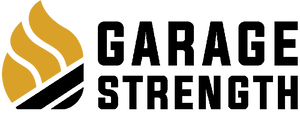Strict Press
Strict Press Essentials: Benefits Of Pressing Overhead
Pressing exercises are a focal point of upper body development. The ability to move heavyweight fast with the upper limbs, as well as possessing absolute, raw strength for moving the heaviest weights possible are base level skills needed for athletic power, strength, and muscle.
At Garage Strength we love the bench press. We love the incline bench press. We love the dumbbell bench press. We love all the variations and derivatives of the aforementioned pressing movements. And for the most part, all of the mentioned pressing movements involve a horizontal press for developing the chest, delts, and triceps.
But we also like pressing overhead.
Typically, we press overhead in a dynamic manner. Our athletes start their upper body training days with a technical coordination exercise. Technical coordination exercises are the snatch, jerk, and clean, including all derivatives and variations of those exercises. On upper body day, it is likely the technical coordination movement being used is a jerk.
It can be a split jerk, a behind the neck jerk, a power jerk, a linebacker jerk, or any of those dynamic exercises that allows for an overloading of the weight because the full body is used to heave the weight overhead.
Which is unlike the strict press.
The strict press technically isn’t a full body movement. It isn’t a technical coordination movement either. The strict press is actually an absolute strength exercise, and can even be used as an accessory movement depending on the variation used, implement used, or other factors, like the amount of reps.
Let’s dive into the strict overhead press and how it can benefit you as an athlete, fitness enthusiast, or lover of all things pressing.
The Muscles
The strict press is a huge developer of the deltoid muscles. The anterior deltoid puts in work. As you get more proficient at the movement, and your body begins to coordinate more and more muscles, you’ll feel that lateral deltoid and that rear delt firing as well.
Being a pressing movement, you will also feel your triceps doing a bunch of work. Where the deltoids help get the barbell off your chest, the triceps are what help you lockout the movement. No matter the pressing the movement, don’t ever discount the triceps contribution to making the weight move.
Those are the most obvious muscles. But they aren’t the only muscles. You will also engage your traps and pecs during the press. Your pec engagement can vary depending on the width of your grip.
Your lats are also heavily involved when pressing overhead, particularly as you become more efficient, the weight gets heavier, and the amount of muscles recruited to complete the movement increases.
I’m no pressing god, but I have strict pressed 100 kilos for a double, 107 kilos for a single, and 111 kilos using a bounce to catch a stretch shortening cycle off the shoulders. They ain’t strongman type power by any means, but they hold up amongst the non-giants of the world as respectable lifts. And I can tell you, my lats begin working so hard at those weights it's unreal.
The other group of muscles that put in work when strict pressing overhead are the trunk muscles. The muscles of your core give much of the stability you need to send the bar from your chest to overhead. The abdominal muscles, the lower back muscles, the obliques, and even the spinal erectors all factor into having a solid press.
The final muscle group I want to mention that is utilized are the glutes. I know, I know, there is no lower body leg drive when performing the strict overhead press. That is completely correct. However, your glutes need to be engaged. Why? Because your legs are still your point of ground contact and are ultimately responsible for giving the body a firm base. By squeezing your glutes, the trunk and the rest of the torso have a firm, solid foundation to balance upon for pressing the weight overhead.
So, squeeze your butt.

The Strict Overhead Press
The strict overhead press is an absolute strength movement. To perform the movement, you place a loaded barbell on your shoulders and press the barbell over your head until your elbows are locked out.
Don’t push the barbell forward or diagonally. Push the barbell straight overhead, avoiding your chin in the process. It is best when the elbows are locked out to end with the biceps by the ears. I even like to think of the barbell being in a similar position as a back squat, only raised up the Y axis of the body so that it is overhead and not resting on the upper back and traps.
There is nothing more to it. The overhead press is a very simple, to the point, vertical pressing absolute strength exercise.
Few things to note.
Starting the movement with the barbell on your front delts and shoulders is ideal. This makes for the largest range of motion. Being able to move through a greater range of motion is almost always a plus.
When starting with the barbell on your front delts and shoulders, it is eerily similar to a front rack position for a front rack or when catching a clean. The slight difference comes from the fact that having the elbows more under the bar creates for better leverage when strict pressing overhead.
Some athletes, either because of massive muscles, but more often because of mobility issues, unrack the bar and strict press from around their chin. Heavy weight is heavy weight, no matter the range of motion. Though the larger the range of motion, naturally the more difficult the lift is to perform as weights increase.
As a personal example, from the front rack I have previously strict pressed 100 kilos for a double. From the chin, I have strict pressed 100 kilos for 5 reps for sets. The range of motion makes a difference.
Two cues I want to give when strict pressing is to make sure to engage the core and squeeze the butt cheeks for a firm pressing foundation. From there it is gravy. And when the weight feels like it doesn’t want to go any more, get ready for your lats to really feel the burn and give that extra umph needed to complete the lift.

Alternative Exercises
My bio says the King of the PA Press for a reason. The PA Press is this weird amalgamation of a push press and a strict press.
I say that because the PA Press is performed almost identical to a push press because there is a dip and a drive, except with the PA Press you are on your knees. Being on your knees makes the stability factor a whole new ball game for the core, glutes, and torso.
I have PA Pressed 120 kilos for a single, and I can tell you, the trunk work, lat recruitment, deltoid, and triceps work ain’t a joke. Throw in there the sissy squat eccentric that needs to be performed to get into position, and the clean that needs to be completed to get the barbell back into the rack, the PA Press is a workout.
To do the movement, I take a barbell out of a squat rack in a front rack position. On the ground I have a foam balance pad for my knees and a single block on each side to drop the weight after completing the set.
To get into position, I squat down and then deliberately tip my knees forward onto the foam balance pad as if I am going to kneel to pray.
I then start the movement by sitting back on my calves, holding a firm torso while the barbell remains in the front rack position. With my muscles engaged, I initiate hip drive and extend so that I am balanced on my knees, my body position looking like a backward letter L. As I extend with the lower body, I simultaneously drive with the arms to press the weight overhead.
It is paramount that the weight is in the groove. If you push the weight even the slightest bit too far forward, good luck finishing the rep.
The PA Press is a unique stimulus to help develop your strict overhead press.
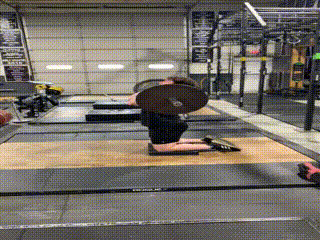
Push Press
The push press is a much more familiar movement to most lifters out there. The push press is synonymous in movement patterns with the PA Press, except it is done from a standing position. From the standing position, the added leg drive is a decisive factor in allowing lifters and athletes to use more weight.
The usage of more weight is where the push press is worth its weight in gold for improving your strict press. See, the push press works essentially the exact same muscles in nearly the exact same way, except you have that powerful leg drive coming from the hips, glutes, quads, and hamstrings to allow you to use way more weight.
Using more weight creates an overload effect. Look at it as being similar to bench pressing with a pad. By using more weight, the body understands and feels the mechanical tension. The added mechanical tension makes for stronger triceps, bigger delts, and a sturdier core for all things pressing overhead.
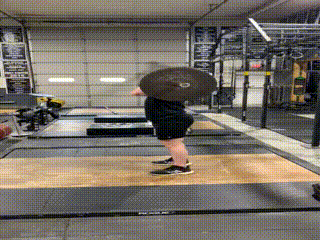
Z Press
I love this exercise.
Named after strongman legend, Big Z, Zydrunas Savickas, the Z Press is a great accessory exercise for developing your strict pressing capabilities.
As an exercise, it is a movement where it is tough to go heavy simply because getting into the proper position is quite the chore.
I have done the Z Press with the barbell behind my neck and in a front rack. I have done the Z Press with dumbbells. No matter the implement or the barbell position, the body is always in the same position.
The Z press is performed seated on the floor with your feet extended out.
Want to talk about an awkward position to press from, the Z press takes the cake. That awkwardness though is a gold mine. The neurological gains are worth it alone. However, the trunk and core work that comes along with it is just as great.
Because of the awkwardness of getting into position to perform the exercise, especially if you are lifting solo, the movement tends to be lighter. Because of the less intense weight usage, you’d be well served keeping the reps high during your working sets.
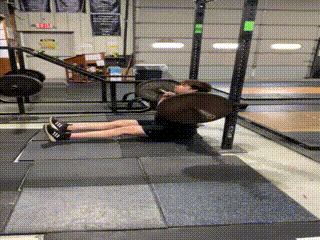
Military Press
Another great exercise where you press overhead!
The Military Press is another movement where you can put the barbell behind the neck, in the front rack, or use dumbbells. Actually, you can do that with any of these variations for that matter.
If I am doing the Military Press with a barbell, I like to go behind the neck. I like the variation of the range of motion with my shoulders. I also like doing this movement with dumbbells to get some unilateral type of work in for shoulder stability purposes.
The Military Press is eerily similar to the strict overhead press but differs in one very distinct way–and that is that you're seated on a bench.
That seat on the bench can be done with the back supported or without the back supported. Each has benefits. Having your back supported, you are able to use the back support to lean into and thus use more weight from the added support. When not having your back supported, you get more trunk work and help create that protective barrel of a gut with protruding turtle shell abs for a sturdy base to press from. Like I said, both variations are excellent and have benefits.
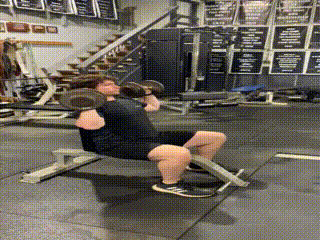
Handstand Pushups
A handstand pushup goes a long way for developing overhead pressing strength and power. And who wants to argue with a great calisthenic exercise?
I’m a firm believer in using a kipping handstand pushup. Why? A few reasons. First, a kipping handstand pushup is a much more athletic movement than a strict handstand pushup. You need to be able to coordinate your lower limbs with your pressing upper body. The kip forces more kinesthetic awareness and also allows you to execute more volume of the movement.
I’m also a firm believer in using a strict handstand pushup. Why? The strict handstand pushup requires more strength. And being that it is a bodyweight movement, the amount of weight you are moving is no joke.
However, the handstand pushup is a partial range of motion movement. Without a deficit or parallel bars, the range of motion is essentially from the top of your head to lockout. This isn’t a bad thing in any capacity; it just is.
Adding a larger range of motion is as simple as stacking plates where your hands are placed to create various deficits. If you are looking for some fun and a test of your pressing strength, see how far you can go with the deficit.
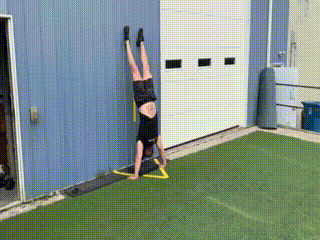
Sample Upper Body Power Day Workout (Strict Press Focused)

Sample Hypertrophy Day Workout (Strict Press Focused)


The Bottom Line
Developing overhead pressing strength is great for shoulder health and muscular development. It makes your upper limbs robust, and your trunk firm. There is no denying it, pressing overhead is one of the absolute best core workouts out there, right up there with other compound movements like the squat. And maybe best of all, pressing overhead gives you those wide, broad shoulders that holler to on-lookers, big, strong, and YOKED.
Take either of the provided upper body workouts and run through them next time you are in the gym and have an upper body workout scheduled. But if you are looking for a long-term fix, the premier strength development app for athletes, Peak Strength, will create a program from over 700 exercises (way more than what’s provided here!) to give you that athletic muscle to sculpt a thiccc, athletic physique. Try a week of workouts for free at peakstrength.app today!


EARL KUNKEL
3x World Champion Co-Author of the Year
King of the PA Press
Blog Topics

Yo, It's Dane
Welcome to the Garage Strength Blog, where it is my goal to provide you with the experience and knowledge I've gained in the strength and conditioning world over many years of learning from both successes and failures. I train elite-level athletes in a multitude of sports from the high school to professional levels, already producing 5 Olympics and 30+ National Champions. If you want to be the next champion I train, check out my strength programs below!
Start Training With Me

Join for free educational videos EVERY WEEK on strength coaching and athletic performance
